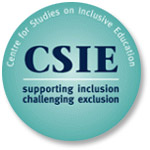What is social inclusion?

Social inclusion is the process of improving the terms on which individuals and groups take part in society—improving the ability, opportunity, and dignity of those disadvantaged on the basis of their identity.
Inclusion is a term used by people with disabilities and other disability rights advocates for the idea that all people should take action to freely accommodate people with a physical, mental, cognitive, and or developmental disability.
What is social exclusion?

Social exclusion is the process in which individuals or people are systematically blocked from (or denied full access to) various rights, opportunities and resources that are normally available to members of a different group, and which are fundamental to social integration and observance of human rights within that particular group (e.g., housing, employment, healthcare, civic engagement, democratic participation, and due process)
What is the definition of disadvantaged?
“Disadvantaged” is a generic term for individuals or groups of people who:
- Face special problems such as physical or mental disability
- Lack money or economic support
For the purpose of this manual the term “disadvantaged” is defined on the basis of people’s identities thus also includes refugees, immigrants, ethnic and social minorities.
UNESCO – Promoting a Global Commitment
UNESCO’s Salamanca Statement
The extent to which more inclusive educational practices are promoted at country level will depend on the development of a clear understanding of the concept of ‘inclusive education for all’ in the cultural contexts in which it is developed.
Get familiar with UNESCO’s Salamanca Statement, which claims, that all participating representatives should provide equal access to education for all children.
This statement was signed by 92 governments and 25 international oganisations that met in 1994 in Salamanca, Spain, for the World Conference on Special Need Education.

Providing Equal Access to Education for all Children
Education For All (abbreviated EFA) is a UNESCO initiative.
„The underlying principles of EFA and inclusive education are about addressing ‘all’, but they have differed in the way they have approached these concerns. In inclusive education there is a tension between the needs of disabled individuals on the one hand and the notions of equality and social inclusion on the other. In EFA there has been insufficient scrutiny of the two central concepts of “education” and “all”.
Although the EFA Framework recognises that “the main delivery system for the basic education of children outside the family is primary schooling”, it also states that supplementary and alternative programmes can help meet the basic learning needs of children with limited or no access to formal schooling.” /Susie Miles & Nidhi Singal, Febr 2010, Int. Journal of Incl. Edu./

The Education for All and inclusive education debate: Conflict, contradiction or opportunity?
This paper examines the International Education ofr All (EFA) programme in detail. Go to the publication here.
The paper begins with an exploration of the history of the international Education for All (EFA) programme and its tendency to overlook some marginalised groups of children, in particular those seen as having ‘special educational needs’ or impairments and disabilities. The exclusion from‘mainstream’ education programmes of the estimated, though unreliable,figures of 90 or 98 percent of children in southern countries has, until relatively recently, been largely unchallenged. The explanation lies in the still prevalent view that some children are ‘ineducable’ and that overcrowded and under-resourced schools would not be able to cope. Consequently, a largely parallel, international debate has developed about ‘inclusive education’, within which many conflicting positions exist. We suggest that there is an unhelpful and wasteful polarisation between EFA and inclusive education. Although inclusive education is defined by some writers in terms of overcoming barriers to learning and development for all children, in the context of Southern countries it tends to fill the gap left by EFA and so focuses almost exclusively on disabled children. This paper challenges some of the rhetoric, but also highlights the opportunities created by the current international interest in, and apparent commitment to, delivering quality education for all children. The paper concludes by offering a re-conceptualisation of the relationship between EFA and inclusive education, argues for greater collaboration and synergy between these currently parallel initiatives, and suggests ways in which practitioners and policy makers can develop more sustainable, and context-appropriate, policies and practices.
Susie Miles & Nidhi Singal, Febr 2010, Int. Journal of Incl. Edu.
The UNESCO, UN’s Educational, Scientific and Cultural Organisation has issued “A guide for ensuring inclusion and equity in education” in 2017, which is a series of programs trying to better the current situation with the help of all member countries by 2030.
A quote from this research indicates that: “Encouraging student participation is the best use of available resources, particularly human resources, to support learning. In particular, there is strong evidence of the potential of approaches that encourage cooperation between students for creating classroom conditions that can both maximise participation, while at the same time achieving high standards of learning for all members of a class (Johnson and Johnson, 1989)
However, it is important to stress the need for skill in orchestrating this type of classroom practice. When group approaches are poorly managed, there is usually a considerable waste of time and, possibly, increased disruption.
In this area, the economically poorer countries of the South have much to teach us. In these countries, limited resources have led to recognising the potential of ‘peer power’ by developing ‘child-to-child’ programmes (Hawes, 1988). This suggests that the learners themselves are an under-used resource that can be mobilised to overcome barriers to participation in lessons and contribute to improved learning opportunities for all class members. The essential resource is already present in any classroom; what is key is the teachers’ ability to mobilise this, often untapped, energy.”



